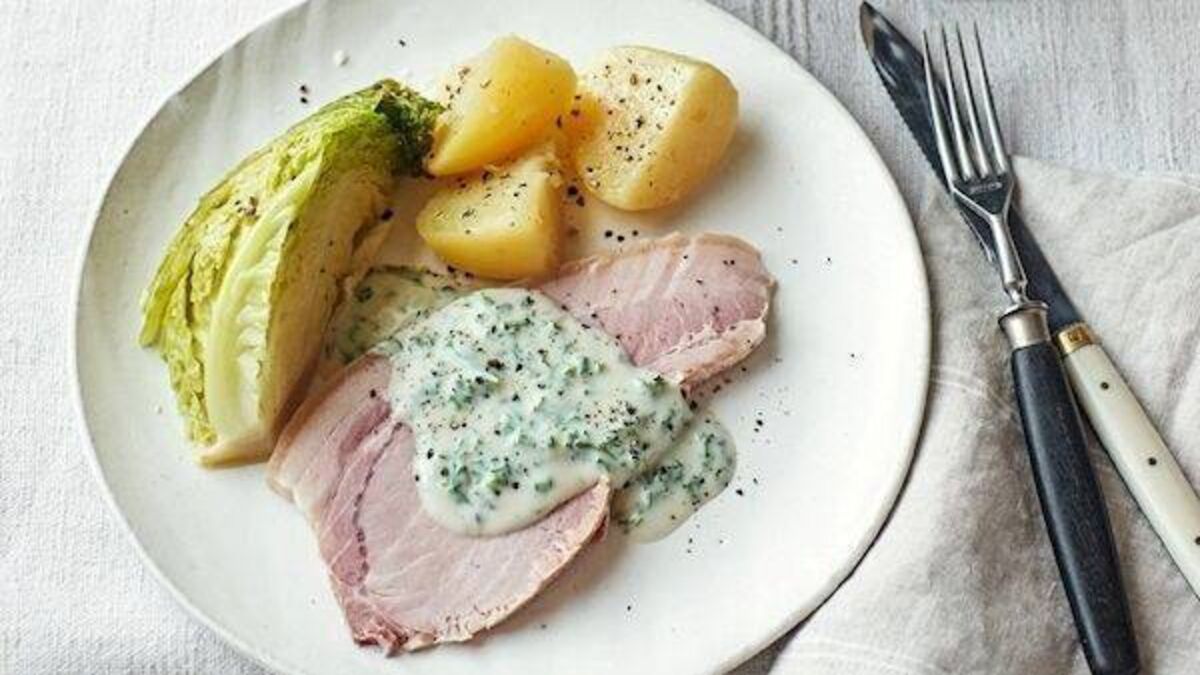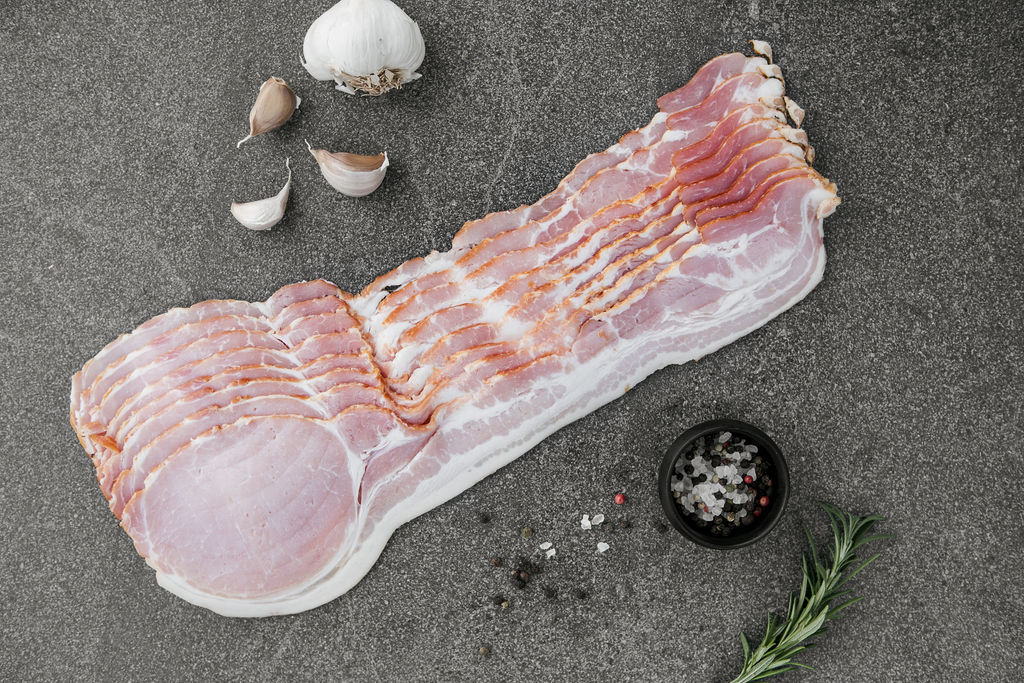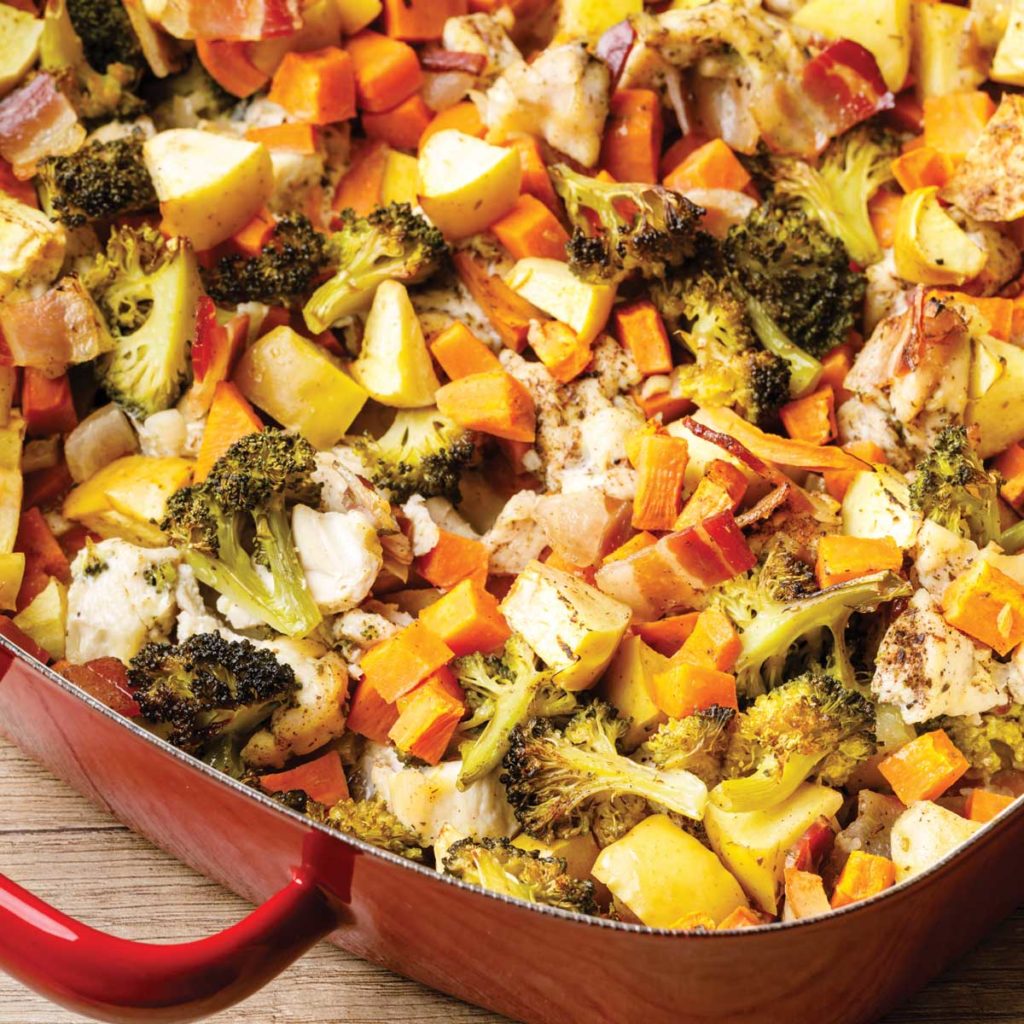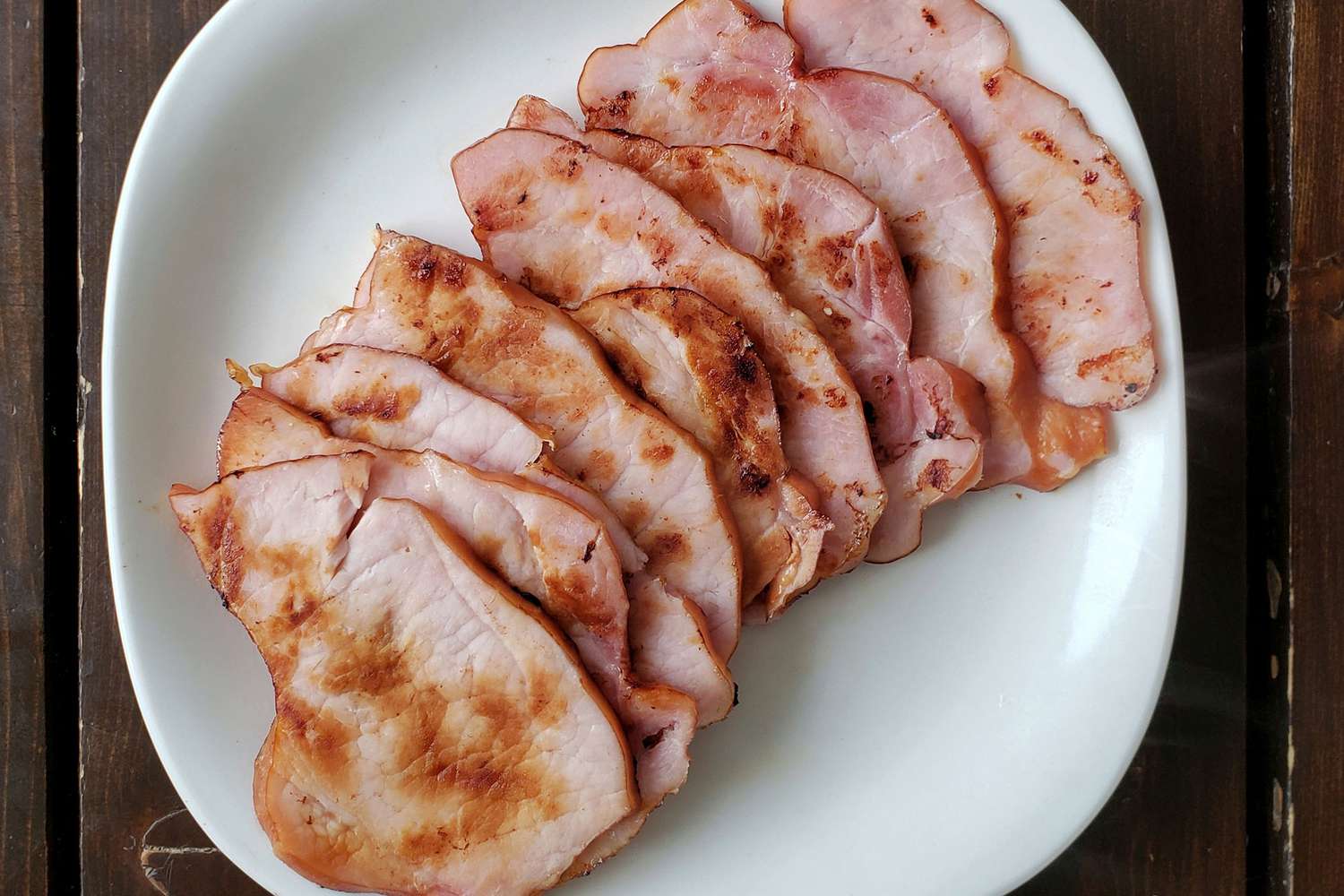Bacon In Ireland - From Farms To Flavor
Explore the savory world of bacon in Ireland, where tradition meets culinary innovation. From the iconic full Irish breakfast to its role in various traditional and contemporary dishes, discover how Irish bacon weaves a flavorful tale rooted in the country's agricultural heritage.
Author:Tyreece BauerReviewer:Tobey StricklandOct 25, 202327.2K Shares363.5K Views

Bacon in Ireland, commonly referred to as rashers, transcends mere culinary significance, it embodies a cultural tradition deeply ingrained in the fabric of Irish life. Unlike its American counterpart, Irish back bacon, sourced predominantly from the back of the pig, intricately weaves together the flavors of lean loin and succulent belly.
This distinctive cut, celebrated for its balance and tenderness, finds its place not only in the iconic full Irish breakfast but also as a versatile ingredient in various traditional and contemporary Irish dishes.
The sizzle of Irish bacon in a pan signifies more than a meal; it represents a connection to the country's agricultural roots and the craftsmanship that transforms simple ingredients into a culinary legacy. Each slice is a savory journey through Ireland's rich gastronomic tapestry, where bacon isn't just food, it's a flavorful chapter in the story of Irish culinary heritage.
What Is Irish Bacon?
Irish bacon, often referred to as bacon rashers, distinguishes itself through its unique preparation and cut. Derived from the back of the pig, Irish style bacon is notably leaner than its American counterpart, featuring a balanced ratio of meat to fat.
The cut includes both the loin and a section of the belly, resulting in a delightful combination of tenderness and flavor.
Unlike American bacon, Irish bacon is typically not smoked, offering a milder taste that allows the natural pork flavors to shine. Commonly enjoyed as a breakfast staple in Ireland, it undergoes various cooking methods, from grilling to pan-frying.
The versatile nature of Irish bacon extends its use beyond breakfast, appearing in sandwiches and various dishes where its savory profile adds a distinct touch. This culinary tradition reflects the rich agricultural heritage of Ireland and contributes to the country's diverse and flavorful cuisine.
Irish Bacon Rasher
The Irish Bacon Rashers is a delectable cut that plays a significant role in Irish culinary heritage. Derived from the back of the pig, it combines the lean loin with a portion of belly, resulting in a well-balanced meat-to-fat ratio.
What sets it apart is its distinct preparation, unlike American bacon, the Rasher Irish Bacon is typically not smoked. This lends it a milder flavor, allowing the natural pork taste to take center stage.
Often enjoyed as a breakfast staple in Ireland, it undergoes various cooking methods such as grilling or pan-frying. Its versatility extends beyond breakfast, making appearances in sandwiches and various dishes where its savory essence adds a unique touch.
The Irish Rasher Bacon is a testament to Ireland's culinary craftsmanship, reflecting a tradition deeply rooted in the country's agricultural and gastronomic history.
Just like bacon in Ireland is different, sausage is also different. The sausage in Ireland is known as banger.
Bangers And Rashers
Bangers and rashers are iconic elements of traditional Irish and British cuisine. "Bangers" refer to sausages, particularly pork sausages, known for their distinctive popping sound when cooked. These flavorful sausages often accompany breakfast dishes, providing a savory kick to the meal.
On the other hand, "rashers" pertain to slices of bacon, a beloved breakfast staple with a rich, smoky taste. Together, bangers and rashers form a classic duo frequently featured in the famous "full English" or "full Irish" breakfasts.
The hearty combination of sizzling sausages and crispy bacon is a comfort food enjoyed not only for breakfast but also in various culinary creations. Whether in a sandwich, casserole, or alongside eggs and beans, bangers and rashers encapsulate the heartiness and warmth associated with traditional British and Irish cooking.
Difference Between Bacon And Rashers
The difference between bacon and rashers lies in their preparation, cut, and regional variations.
While both are derived from pork, bacon, as commonly known in the United States, is often smoked and comes from the belly of the pig, resulting in a fattier and more intensely flavored product.
On the other hand, rashers, especially in Irish cuisine, are typically cut from the back of the pig, including a combination of the loin and belly.
Unlike American bacon, Irish rashers are usually not smoked, offering a milder taste that allows the natural pork flavors to stand out.
The distinction extends to cooking methods, with rashers commonly grilled or pan-fried. Ultimately, the difference is nuanced, reflecting diverse culinary traditions and preferences across regions.
Eggless Breakfast Casserole With Bacon In Ireland
Creating an eggless breakfast casserole with bacon opens up a world of delicious possibilities for those seeking a vegetarian or egg-free option.
This flavorful dish typically combines a medley of ingredients like diced potatoes, bell peppers, onions, and cheese, layered with savory bacon strips.
The absence of eggs is compensated by using alternative binders like a seasoned flour mixture or plant-based ingredients.
The bacon adds a smoky and rich dimension to the casserole, infusing it with a hearty, savory essence. Herbs and spices such as thyme, garlic, and black pepper enhance the overall flavor profile.
Baked to perfection, the casserole becomes a satisfying and wholesome breakfast option that caters to diverse dietary preferences while maintaining a comforting and indulgent character.
This Irish back bacon recipe showcases the versatility of ingredients in crafting a flavorful morning meal.
How To Make Irish Bacon?
Making Irish bacon at home is a rewarding culinary venture, capturing the essence of this traditional Irish delight. Begin by selecting a quality cut, often from the back of the pig, including a mix of loin and belly for a well-balanced flavor.
Unlike some other bacon varieties, Irish bacon is typically not smoked, allowing the natural pork taste to be the star.
Start by seasoning the bacon with a blend of salt, pepper, and optional herbs for added depth.
Allow it to marinate for a few hours or overnight for the flavors to infuse. Next, you can either grill, bake, or pan-fry the bacon until it reaches the desired level of crispiness.
The result is a savory, flavorful bacon that pays homage to the rich culinary traditions of Ireland.
How To Cook Irish Bacon - Irish Bacon Recipe
Cooking Irish bacon is a delightful culinary endeavor that showcases the rich flavors of this distinct pork product.
To prepare a delicious Irish bacon dish, start by selecting quality rashers, typically cut from the back of the pig for a balanced meat-to-fat ratio.
Begin by heating a skillet or griddle over medium heat. No additional oil is usually required, as the bacon will release its own flavorful fat.
Place the bacon rashers in the pan, ensuring they are not overcrowded to allow even cooking. Pan-fry the bacon until it reaches your desired level of crispiness, flipping occasionally.
For a twist, consider adding a touch of sweetness with a drizzle of honey or maple syrup towards the end of cooking.
This enhances the savory notes of the bacon. Alternatively, you can incorporate herbs like thyme or a sprinkle of black pepper for added depth.
Serve the Irish bacon hot, perhaps with traditional Irish breakfast accompaniments like black pudding, white pudding, eggs, and grilled tomatoes.
This straightforward Irish bacon recipe emphasizes simplicity, letting the quality of the pork shine through for a flavorful and satisfying meal.
How To Cure Irish Boiling Bacon?
Curing Irish bacon is a traditional process that imparts flavor and preserves the meat. Let's have a look on how to cure Irish Bacon?
Create a curing mixture using kosher salt, sugar, and optional seasonings like black pepper or herbs. Generously rub this mixture over the bacon, ensuring thorough coverage. Place the bacon in a non-reactive container, refrigerate, and let it cure for several days. Turn the bacon occasionally to distribute the curing mixture evenly.
After the curing process, rinse the bacon to remove excess salt, then air-dry or refrigerate for a day to develop a pellicle, a thin, tacky layer that helps in smoke absorption.
Once ready, you can cold-smoke the bacon for additional flavor or proceed with cooking methods like grilling or roasting. Curing Irish bacon at home allows for a personalized touch, resulting in a flavorful, well-preserved delicacy that pays homage to the rich culinary heritage of Ireland.
Irish Black Bacon
Irish Black Bacon, a distinctive delicacy, is a testament to Ireland's diverse pork traditions.
What sets it apart is its coating of cracked black pepper, creating a savory and mildly spicy profile. Unlike traditional rashers, Irish Black Bacon undergoes a slow curing process, enhancing its taste and texture.
Typically not smoked, it allows the natural pork flavors to shine through. To prepare, slice thinly and pan-fry until crisp, revealing a delightful blend of succulent meat and peppery notes.
Often enjoyed as part of a traditional Irish breakfast, this bacon variety exemplifies the country's commitment to quality, craftsmanship, and the celebration of diverse culinary influences.
Whether served on its own or as a flavorful addition to dishes, Irish Black Bacon offers a unique and savory experience for those seeking a taste of authentic Irish pork craftsmanship.
Irish Black Bacon Recipe
- Cut the meat in half lengthwise, starting at the lower half and cutting all the way through to the rear without cutting it in two.
- Use the longest knife you have. Roll the piece you just cut backwards to gently open it up.
- Continue cutting and rolling backwards in this manner until you have three portions. The goal is to spread the meat out into a flatter, thinner slice than when you started.
- Apply Dijon to the bacon and generously pepper. Rub the meat with grated or crushed garlic.
- The herbs don't need to be chopped. Place them on top of the meat's surface. Over the sprigs, strew chives and lemon zest.
- Once more, roll the loin as tightly as you can.
- Lay the streaky black bacon strips out on a board, then lengthen them by cutting at an angle over the top.
- To create a tidy log, place the rolled loin on the bacon and roll it up once more. 30 minutes of cooling after carefully wrapping in cling film. The log's shape will be preserved while cooking thanks to the chilling.
- Oven - Preheat to 190C/375F/Gas 5.
- After removing the cling film, bake the food for 35 to 40 minutes. Before serving, let the food rest for ten minutes. Serve alongside a salad of carrots and cumin or sautéed spinach.
Irish Bacon Vs American Bacon
Irish Bacon and American Bacon differ in several key aspects, reflecting distinct culinary traditions. Irish Bacon, often called rashers, is derived from the back of the pig, offering a leaner cut that combines the loin and a portion of the belly.
Notably, it is typically not smoked, allowing the natural pork flavors to predominate. On the contrary, American Bacon is commonly taken from the pork belly, resulting in a fattier cut that is often smoked, imparting a smoky flavor.
Irish Bacon tends to be milder and less crispy than its American counterpart, emphasizing the meat's natural taste.
The cooking methods also differ, with Irish Bacon often grilled or pan-fried. These variations highlight the diversity in pork processing and cultural preferences, making both bacon types unique and beloved in their respective culinary landscapes.
Irish Bacon Vs Canadian Bacon
Irish Bacon and Canadian Bacon represent two distinct styles of cured pork, each with its unique characteristics. Irish Bacon, or rashers, is typically cut from the back of the pig, offering a leaner and more varied combination of loin and belly.
Unlike Canadian Bacon, Irish Bacon is not smoked, showcasing a milder flavor that allows the natural pork taste to shine through. It's commonly pan-fried or grilled for a delightful breakfast experience. Conversely, Canadian Bacon, also known as back bacon, is taken from the pork loin and is often cured and smoked.
This process imparts a different flavor profile compared to Irish Bacon, with a slightly smoky and ham-like taste. Canadian Bacon is usually sliced thicker and is a popular choice for breakfast sandwiches. In essence, the differences lie in the cut, preparation, and regional influences, offering bacon enthusiasts a diverse range of flavors and textures to enjoy.
Bacon In Ireland FAQs
What Is The Role Of Irish Bacon In A Full Irish Breakfast?
Irish bacon is a key component of a full Irish breakfast, alongside other elements like sausages, black and white pudding, eggs, and tomatoes.
Can You Find Irish Bacon Outside Of Ireland?
Yes, Irish bacon is available in many international markets. Look for specialty or Irish grocery stores to experience the authentic flavor.
Are There Different Cuts Of Bacon In Ireland?
Yes, besides rashers, there are variations like Irish black bacon, which is often derived from the loin and has a distinctive preparation involving curing and air-drying.
Can You Substitute Irish Bacon In Recipes That Call For American Bacon?
While the flavor profiles differ, you can often substitute Irish bacon for American bacon in recipes. Keep in mind the variations in taste and adjust accordingly.
How Do You Store Irish Bacon Rashers?
Store Irish bacon in the refrigerator. If not using it immediately, consider freezing it to prolong its shelf life.
Conclusion
Bacon in Ireland is more than a breakfast staple; it's a culinary emblem deeply rooted in the country's traditions. In the sizzling world of global bacon variations, Irish bacon stands out as a testament to Ireland's commitment to quality pork production and a celebration of authentic flavors.
Whether enjoyed as part of the iconic full Irish breakfast or creatively incorporated into diverse recipes, the journey through the savory world of Irish bacon is a flavorful exploration of the country's agricultural traditions and a nod to the evolving palates that embrace the best of Ireland's culinary offerings.
Jump to
What Is Irish Bacon?
Irish Bacon Rasher
Bangers And Rashers
Difference Between Bacon And Rashers
Eggless Breakfast Casserole With Bacon In Ireland
How To Make Irish Bacon?
How To Cook Irish Bacon - Irish Bacon Recipe
How To Cure Irish Boiling Bacon?
Irish Black Bacon
Irish Black Bacon Recipe
Irish Bacon Vs American Bacon
Irish Bacon Vs Canadian Bacon
Bacon In Ireland FAQs
Conclusion

Tyreece Bauer
Author

Tobey Strickland
Reviewer
Latest Articles
Popular Articles


